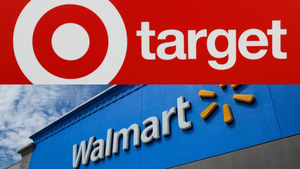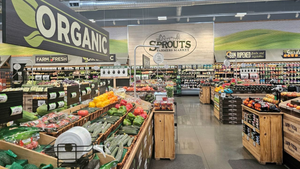Why it’s ‘crucial’ for retailers to operate robust ethnic food aislesWhy it’s ‘crucial’ for retailers to operate robust ethnic food aisles
Want to drive aisle activity? Play to the interests of customers
February 21, 2025

Visits to supermarket ethnic food aisles are becoming a crucial part of consumers’ culinary ventures.
A growing multicultural shopper base along with a rise in adventurous eating has additional shoppers seeking global foods, and that is creating a lust for larger and more distinctive assortments, analysts said.
“It is crucial for retailers to operate robust ethnic food aisles due to the increasing diversity of the U.S. population, which particularly includes younger generations,” said Iris Yim, principal & chief strategist for Sparkle Insights, a Chapel Hill, N.C.-based research and strategies firm. “With this growing diversity comes a rising demand for ethnic foods, both as staples for multicultural consumers and as exploratory options for others.”
Helping to fuel that demand are the approximately 50% of millennials and multicultural teens who indicate that food helps them connect to their culture, reports the Collage Group, a Bethesda, Md.-based consumer research firm.
Shoppers are also seeking a wider range of global foods. The Collage Group reports that 90% of Americans say they either have tried and liked, or want to try Mexican food, and 87% say the same for Chinese food. A large base of consumers also indicate that they like or want to try Japanese (71%), Caribbean (66%), Greek (65%), Thai (62%), Korean (61%), and Cuban (61%) foods, and 53% have positive aspirations for Indian and Vietnamese staples.
Such interest is triggering greater category activity. Ethnic aisle unit sales totaled 2.9 billion for the 52 weeks ending Dec. 1, 2024, up 1.9% from the year-earlier period, reports Circana, a Chicago-based market research firm. Dollar sales were $9.35 billion, a 2.9% gain. The average unit price was $3.23, a 0.9% increase.
Unit sales for Mexican foods reached 1.58 billion, a 1.8% gain, with dollar sales of $4.98 billion, a 3.6% increase. Asian foods had unit sales of 631.3 million, up 3.9%, and dollar sales of $2.02 billion, a 4.9% increase.
Offer a diverse product mix
“It is important for retailers to have evolving ethnic foods aisles,” said Sally Lyons Wyatt, Circana global executive vice president and chief advisor, Consumer Goods & Foodservice Insights. “Not just to cater to the various ethnicities, but also for all Americans who enjoy ethnic cuisines.”
A diverse product mix should include plant-based and health-conscious ethnic selections, Yim said, adding that retailers can better pinpoint the optimal options by analyzing local demographics and partnering with cultural food experts or community focus groups. “Conducting localized data analysis, studying community eating trends, and rotating items to reflect seasonal or trending cuisines will maximize relevance and appeal,” she said.
It also is important to provide unique items, said Victor Paredes, Collage Group vice president of cultural strategy. “It will allow consumers to experience food that isn’t on their radar, or that they are unaware even exists,” he said. “If they like it, chances are it may become a regular purchase going forward and could even encourage shoppers to seek other ‘new’ foods that are found in these aisles.”
The most successful retailers will provide selections in accordance with the interests of each store’s specific shopper bases, said Kathleen Blum, vice president of shopper insights for Chicago-based C+R Research. “Merchandising supermarket ethnic food offerings is not one size fits all, but rather a customized approach,” she said. “This flies in the face of centralized buying efficiencies that many retail banners have moved towards.”
Those interests include the preferences of a store’s “commuter” customers who do not live nearby but may shop at the location before or after work or school, Wyatt said. “It cannot be a guessing game or a casual effort,” Blum said.
Retailers that continuously and closely monitor ethnic product sales also will be able to identify the “blockbuster SKUs” that will attract more shoppers to the section, Blum said. They then can position the items “strategically in-aisle, digitally, and on endcaps to bring attention to complementary products and innovation,” she said.
Boba tea, ramen, Korean BBQ, tacos al pastor, and samosas have become immensely popular in recent years and reveal the potential for ethnic selections to cross cultural boundaries and become mainstream favorites, Yim said. “These foods illustrate how curiosity and exposure to global flavors have created opportunities for retailers to bring once ‘niche’ offerings into everyday grocery shopping,” she said.
Careful segmentation and curation are required
Nevertheless, stocking products that meet the needs of ethnic communities while appealing to a broader shopper base can be challenging, Yim said, noting that initiatives require careful segmentation and curation. “Retailers need to strike a balance between offering traditional ethnic products and adapting to new trends,” she said.
Merchandisers can identify viable options by “keeping a pulse” on media and digital food trends and discussing the topic during joint business planning and category review meetings with the manufacturers who closely monitor movements, Blum said. It also is important to insure that “internal staff devotes time to learning about, understanding, sharing, and actioning these trends during periodic internal summit meetings,” she said.
The growing demand for global foods is likely to continue as food documentaries, cooking shows on platforms like Netflix, and viral content on social media spotlight more selections, Blum said. “Food is an accessible gateway to experiencing other cultures, and consumers increasingly view the trying of ethnic foods as both a culinary adventure and an opportunity for connection,” she said.
Marketing ethnic foods as “hip, exciting, and accessible culinary experiences for everyone” will boost interest as well, Yim said.
That includes highlighting selections in mainstream promotions and cross-merchandising products with popular items from other store sectors, such as naan bread with deli rotisserie chicken, she said.
“By positioning ethnic aisles as a way to ‘travel through taste’ without the need for a passport or pricey restaurant bill, retailers can attract a wider audience, stimulate demand, and normalize ethnic food as part of everyday meals,” Yim said.
About the Author
You May Also Like




.webp?width=300&auto=webp&quality=80&disable=upscale)

